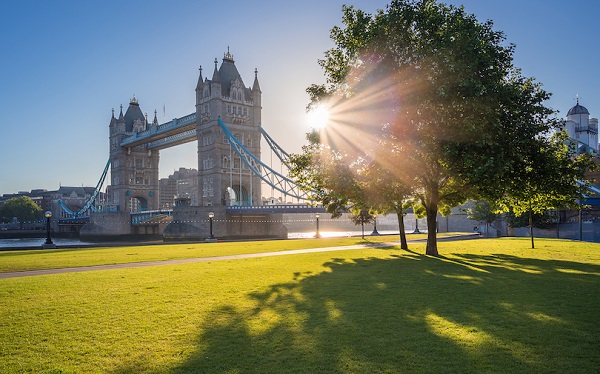Uncategorized
21 detained before Paris protests as police deploy in force

Paris police deployed in large numbers Saturday for the fifth straight weekend of demonstrations by the “yellow vest” protesters, with authorities repeating calls for calm after protests on previous weekends turned violent. At least 21 people were detained beforehand.
Security forces in riot gear were positioned around central train stations and along the famed Champs-Elysees boulevard, where shops were closed and their windows boarded up in anticipation of the protests. Authorities have said about 8,000 police and 14
Last weekend, groups of demonstrators smashed and looted stores, clashing with police and setting up burning barricades in the streets.
Paris police said 21 people had been detained by mid-morning in Paris before the protests. There was a strong police presence outside the central Saint Lazare train station, where police in riot gear checked bags. More than 20 police vans and a water cannon truck idled nearby.
The “yellow vest” movement, which takes its name from the fluorescent safety vests French motorists must all have in their vehicles, emerged in mid-November as a protest against fuel tax increases. It soon morphed into an expression of rage about the high cost of living in France and a sense that President Emanuel Macron’s government is detached from the everyday struggles of workers.
“Respect my existence or expect my resistance,” read one banner held aloft by some of the thousands of protesters who began converging on the Champs-Elysees on Saturday morning.
“We’re here to represent all our friends and members of our family who can’t come to protest, or because they’re scared,” said Pierre Lamy, a 27-year-old industrial worker wearing a yellow vest and with a French flag draped over his shoulders as he walked to the protest with three friends.
He said the protests had long stopped being about the fuel tax and had turned into a movement for economic justice.
“Everything’s coming up now,” Lamy said. “We’re being bled dry.”
On Friday, Macron called for calm during the demonstrations, and the French government reiterated the call online for demonstrators to remain peaceful.
“Protesting is a right. So let’s know how to exercise it,” the government tweeted from its official account, with a 34-second video which begins with images of historic French protests and recent footage of “yellow vest” protesters rallying peacefully before turning to violence.
“Protesting is not smashing. Protesting is not smashing our heritage. Protesting is not smashing our businesses. … Protesting is not smashing our republic,” the video says.
Macron acknowledged in a speech earlier this week that he is partially responsible for the anger displayed during the protests, and has announced measures aimed at improving workers’ spending power. But he has so far refused to reinstate a wealth tax that was lifted to spur investment in France.
“I don’t think our democracy can accept to function with a dialogue that is carried out only with the occupation of the public domain, only by elements of violence,” Macron said Friday.
But on the streets of Paris on Saturday, some protesters were saying the president still didn’t understand them.
“I think that Macron isn’t in touch with what the yellow vests want. I think the yellow vests need to continue speaking out and the problem is that in the countryside,” said Julie Verrier, a protester from Picardie in Normandy in northern France who had been participating in protests there for the past three weeks and had travelled to Paris for Saturday’s demonstration.
“Local city halls are closed so we can’t go there to express and write our complaints and our wishes,” she said. “So coming here is the only way we have to say that French people need to be heard.”
___
Chris Den Hond in Paris contributed.
Raphael Satter And Elena Becatoros, The Associated Press
Uncategorized
Poilievre on 2025 Election Interference – Carney sill hasn’t fired Liberal MP in Chinese election interference scandal

From Conservative Party Communications
“Yes. He must be disqualified. I find it incredible that Mark Carney would allow someone to run for his party that called for a Canadian citizen to be handed over to a foreign government on a bounty, a foreign government that would almost certainly execute that Canadian citizen.
“Think about that for a second. We have a Liberal MP saying that a Canadian citizen should be handed over to a foreign dictatorship to get a bounty so that that citizen could be murdered. And Mark Carney says he should stay on as a candidate. What does that say about whether Mark Carney would protect Canadians?
“Mark Carney is deeply conflicted. Just in November, he went to Beijing and secured a quarter-billion-dollar loan for his company from a state-owned Chinese bank. He’s deeply compromised, and he will never stand up for Canada against any foreign regime. It is another reason why Mr. Carney must show us all his assets, all the money he owes, all the money that his companies owe to foreign hostile regimes. And this story might not be entirely the story of the bounty, and a Liberal MP calling for a Canadian to be handed over for execution to a foreign government might not be something that the everyday Canadian can relate to because it’s so outrageous. But I ask you this, if Mark Carney would allow his Liberal MP to make a comment like this, when would he ever protect Canada or Canadians against foreign hostility?
“He has never put Canada first, and that’s why we cannot have a fourth Liberal term. After the Lost Liberal Decade, our country is a playground for foreign interference. Our economy is weaker than ever before. Our people more divided. We need a change to put Canada first with a new government that will stand up for the security and economy of our citizens and take back control of our destiny. Let’s bring it home.”
Uncategorized
Canada Needs A Real Plan To Compete Globally

From the Frontier Centre for Public Policy
Ottawa’s ideological policies have left Canada vulnerable. Strategic action is needed now
As Canada navigates an increasingly complex geopolitical landscape, the next federal government must move beyond reflexive anti—Americanism regardless of its political leanings. Instead, Canada should prioritize national interests while avoiding unnecessary conflict and subservience.
The notion that Canada can stand alone is as misguided as the idea that it is only an economic appendage of the United States. Both perspectives have influenced policy in Ottawa at different times, leading to mistakes.
Rather than engaging in futile name-calling or trade disputes, Canada must take strategic steps to reinforce its autonomy. This approach requires a pragmatic view rooted in Realpolitik—recognizing global realities, mitigating risks, governing for the whole country, and seizing opportunities while abandoning failed ideologies.
However, if Washington continues to pursue protectionist measures, Canada must find effective ways to counteract the weakened position Ottawa has placed the country in over the past decade.
One key strategy is diversifying trade relationships, notably by expanding economic ties with emerging markets such as India and Southeast Asia. This will require repairing Canada’s strained relationship with India and regaining political respect in China.
Unlike past Liberal trade missions, which often prioritized ideological talking points over substance, Canada must negotiate deals that protect domestic industries rather than turning summits into platforms for moral posturing.
A more effective approach would be strengthening partnerships with countries that value Canadian resources instead of vilifying them under misguided environmental policies. Expand LNG exports to Europe and Asia and leverage Canada’s critical minerals sector to establish reciprocal supply chains with non-Western economies, reducing economic reliance on the U.S.
Decades of complacency have left Canada vulnerable to American influence over its resource sector. Foreign-funded environmental groups have weakened domestic energy production, handing U.S. industries a strategic advantage. Ottawa must counter this by ensuring Canadian energy is developed at home rather than allowing suppressed domestic production to benefit foreign competitors.
Likewise, a robust industrial policy—prioritizing mining, manufacturing, and agricultural resilience—could reduce dependence on U.S. and Chinese imports. This does not mean adopting European-style subsidies but rather eliminating excessive regulations that make Canadian businesses uncompetitive, including costly domestic carbon tariffs.
Another key vulnerability is Canada’s growing military dependence on the U.S. through NORAD and NATO. While alliances are essential, decades of underfunding and neglect have turned the Canadian Armed Forces into little more than a symbolic force. Canada must learn self-reliance and commit to serious investment in defence.
Increasing defence spending—not to meet NATO targets but to build deterrence—is essential. Ottawa must reform its outdated procurement processes and develop a domestic defence manufacturing base, reducing reliance on foreign arms deals.
Canada’s vast Arctic is also at risk. Without continued investment in northern sovereignty, Ottawa may find itself locked out of its own backyard by more assertive global powers.
For too long, Canada has relied on an economic model that prioritizes federal redistribution over wealth creation and productivity. A competitive tax regime—one that attracts investment instead of punishing success—is essential.
A capital gains tax hike might satisfy activists in Toronto, but it does little to attract investments and encourage economic growth. Likewise, Ottawa must abandon ideological green policies that threaten agri-food production, whether by overregulating farmers or ranchers. At the same time, it must address inefficiencies in supply management once and for all. Canada must be able to feed a growing world without unnecessary bureaucratic obstacles.
Ottawa must also create an environment where businesses can innovate and grow without excessive regulatory burdens. This includes eliminating interprovincial trade barriers that stifle commerce.
Similarly, Canada’s tech sector, long hindered by predatory regulations, should be freed from excessive government interference. Instead of suffocating innovation with compliance mandates, Ottawa should focus on deregulation while implementing stronger security measures for foreign tech firms operating in Canada.
Perhaps Ottawa’s greatest mistake is its knee-jerk reactions to American policies, made without a coherent long-term strategy. Performative trade disputes with Washington and symbolic grandstanding in multilateral organizations do little to advance Canada’s interests.
Instead of reacting emotionally, Canada must take proactive steps to secure its economic, resource, and defence future. That is the role of a responsible government.
History’s best strategists understood that one should never fight an opponent’s war but instead dictate the terms of engagement. Canada’s future does not depend on reacting to Washington’s policies—these are calculated strategies, not whims. Instead, Canada’s success will be determined by its ability to act in the interests of citizens in all regions of the country, and seeing the world as it is rather than how ideological narratives wish it to be.
Marco Navarro-Génie is the vice president of research at the Frontier Centre for Public Policy. With Barry Cooper, he is co-author of Canada’s COVID: The Story of a Pandemic Moral Panic (2023).
-

 2025 Federal Election1 day ago
2025 Federal Election1 day agoStudy links B.C.’s drug policies to more overdoses, but researchers urge caution
-

 Business2 days ago
Business2 days agoChinese firm unveils palm-based biometric ID payments, sparking fresh privacy concerns
-

 2025 Federal Election2 days ago
2025 Federal Election2 days agoFormer WEF insider accuses Mark Carney of using fear tactics to usher globalism into Canada
-

 Environment2 days ago
Environment2 days agoExperiments to dim sunlight will soon be approved by UK government: report
-

 2025 Federal Election2 days ago
2025 Federal Election2 days agoConservatives promise to ban firing of Canadian federal workers based on COVID jab status
-

 2025 Federal Election1 day ago
2025 Federal Election1 day agoCarney’s Hidden Climate Finance Agenda
-

 2025 Federal Election1 day ago
2025 Federal Election1 day agoWhen it comes to pipelines, Carney’s words flow both ways
-

 Business1 day ago
Business1 day agoIs Government Inflation Reporting Accurate?






